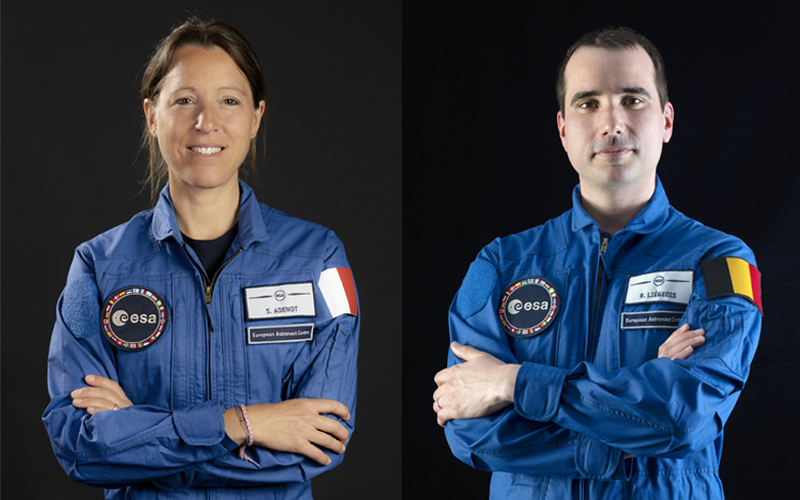
The European Space Agency has announced that Sophie Adenot from France and Raphaël Liégeois from Belgium are the first of its new astronaut class to receive crew assignments.
In February 2021, ESA published its first call for new astronauts in more than ten years, which received a record-breaking 22,500 applicants. In November 2022, the agency announced the selection of five career astronauts and twelve reserve astronauts. The five career astronauts entered basic training in March 2023 and officially graduated in April 2024.
The announcement of the first two career astronauts of the agency’s newest class to secure a ride to space was made on 22 May by ESA Director General Josef Aschbacher at the Space Council meeting in Brussels.
“The assignment of Sophie and Raphaël as the next ESA astronauts flying to the International Space Station marks a significant milestone for ESA and its astronaut class of 2022,” said DG Aschbacher. “As exploration activities develop at an unprecedented rate, sending two newly graduated ESA astronauts to space is a crucial stepping-stone in the path of preserving European knowhow, ensuring Europe’s long-term participation in ongoing programmes such as Artemis as well as in any future projects involving human spaceflight and exploration.”
Sophie Adenot and Raphaël Liégeois will embark on long-duration missions to the International Space Station on flights currently planned for 2026. Adenot is a helicopter test pilot and colonel in the French Air and Space Force and will be the first of her ESA astronaut class to fly into space.
According to ESA, all five astronauts of its new class will embark on a mission to the International Space Station before 2030, when the orbiting laboratory is expected to be retired.
The ESA Reserve Astronaut Paradox
While Sophie Adenot and Raphaël Liégeois are the first ESA career astronauts in their class to receive crew assignments, they will get their ride to space several years after a number of ESA reserve astronauts.
The reserve astronaut from Sweden, Marcus Wandt, launched aboard the Axiom Mission 3 private spaceflight to the International Space Station on 18 January 2024. While Wandt was assigned the role of ESA project astronaut, the mission was funded by Sweden outside the country’s contributions to the agency. Additionally, on his return, Wandt reverted to his position as a reserve ESA astronaut and will not be eligible for future ESA crew assignments.
Poland has concluded a similar deal with Axiom to carry its reserve astronaut Sławosz Uznański to the International Space Station for a short stay. The exact date of this flight is yet to be confirmed. The United Kingdom has agreed to buy out an entire Axiom flight to the orbiting laboratory. While the crew for this flight has not yet been announced, it will likely include reserve astronauts Meganne Christian and John McFall.
There are distinct differences between the Axiom missions and those that Sophie Adenot and Raphaël Liégeois have been assigned. The most obvious difference is the duration of the missions. While the Axiom missions last two or three weeks, Adenot and Liégeois will remain aboard the International Space Station for several months. Once their respective missions are complete, they will also be eligible for future ESA crew assignments, including those to the lunar Gateway space station and possibly even to the surface of the Moon.

